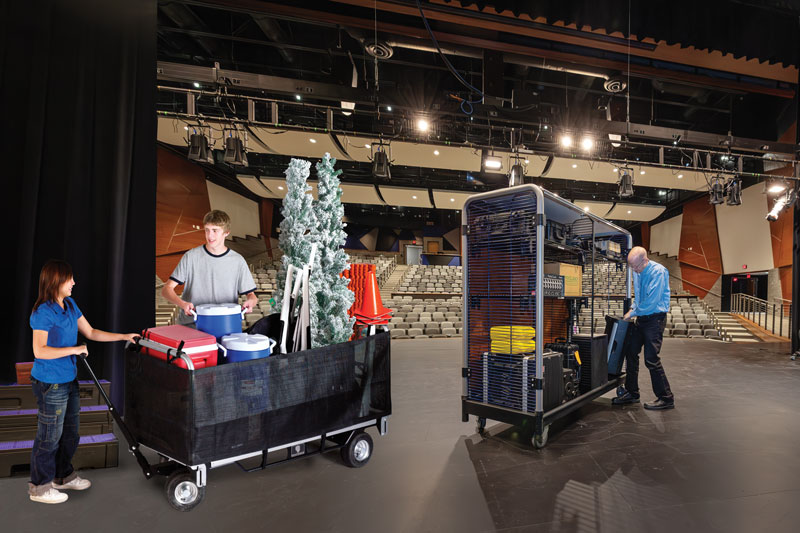 Equipment will wear down through regular use. If you increase the load, you increase the rate of wear. Do you know the common trouble spots in your venue?
Equipment will wear down through regular use. If you increase the load, you increase the rate of wear. Do you know the common trouble spots in your venue?
Sheaves. Overloading, uneven loading, and fleet angles are the most common culprits. Look for uneven wear in the groove, imprinting on the cable pattern in the groove, or cracks in the casting.
Bearings. Sheaves should run smooth, straight, and silent at all times. Anything else is a problem. Particularly bad is a seized bearing, when an unloaded sheave won’t turn by hand. A seized bearing transfers quite a lot of friction to the shaft and will start wearing through the shaft at an alarming rate.
Rope locks. Over-tightened thumb screws make an inexperienced operator force the cam into the dogs, wearing down the malleable iron. Check the cam on the bottom of the lock handle and the dogs within the housing for scoring, metal shavings or dust.
Side plates. Fleet angle and stray cables cause most of the damage to side plates. Look for scoring along the cable entry and exit paths, signs that the cable rubbed against the plate while either slack or under high load since both will make the cable run differently. Stray cables, not properly secured in idler assemblies, can grind and slap against other blocks, get caught on corners and projections, and otherwise make all-around bad noises. Check for scoring on the outside of the block.
Sag bars. While high loads are generally worse for equipment, sag bars can see more wear under low loads as the cable “drapes” over the face and the added contact allows more wear. Conversely, the higher loads cause the cable to act like an abrasive saw, cutting and gouging the surface.
Also bear in mind that a sudden release of the load will have dramatic impact on the system. For instance, if the load was caught on an obstruction, a line going slack could cause the cable to jump the sheave and start wearing on the side plates or shafting. No load is just as problematic as a high load.
To schedule an inspection by an ETCP certified rigging professional, contact J. R. Clancy (800-836-1885), or contact one of these organizations for a list of qualified inspectors in your area:
USITT: www.usitt.org
PLASA: etcp.plasa.org









